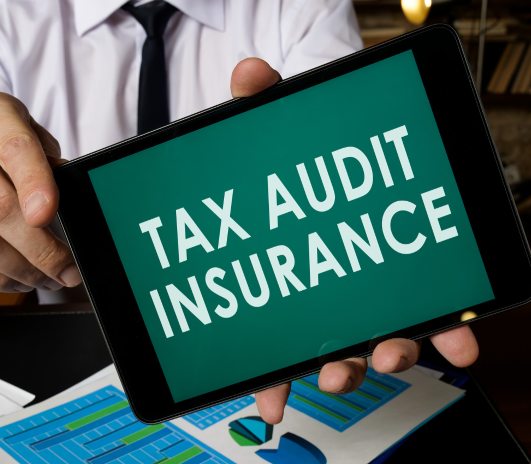GFM May 2025 Newsletter
19 May 2025

May 2025 Newsletter: Informed, Inspired, Involved
With Labor celebrating a landslide victory on the 3rd of May Federal Election, what does this mean for GFM’s small business clients? Labour’s election promises include –
1. $20,000 Instant Asset Write-Off: Extended forsmall business for another 12 months, helping businesses quickly deduct the cost of new assets.
2. Support For Digital Transformation: Promised support for small businesses to adopt digital tools and technologies. This includes grants and assistance to improve business efficiency and online presence.
3. Energy and Cost of Living Relief: Labor aims to reduce energy costs for small businesses by helping them transition to cleaner, more affordable energy sources, including a plan to subsidise household battery costs. Labor will reintroduce a $150 rebate on household and small business power bills, automatically applied in two instalments from July. A two-stage tax cut will also begin—$5 a week from July 2026, increasing to $10 a week from July 2027.
4. Workforce Development: Expanding access to training and development programs, helping small businesses upskill their workers and adapt to changing market conditions.
5. Tax Reform: Proposing changes to make the tax system fairer and simpler for small businesses, potentially including tax cuts and more efficient compliance measures.
As more details on Labour’s Election promises are released and legislated the GFM Accountant’s team will continually keep you up to date. For the latest news please refer to our website – gfmaccountants.au or contact your GFM Accountants team member today.
Regards
Darren, Brent and the Team at GFM

Support the GFM Team for the June 2025 Push-Up Challenge!💪
We’re excited to announce that GFM have registered a team for the June 2025 Push-Up Challenge!
This is to support a truly incredible cause—raising awareness and funds for mental health and it would be amazing to have you support us on our journey!
Not only is this a great way to support a meaningful initiative, but it’s also the perfect excuse to get active, have some fun, share our efforts to spread the word and raise even more valuable funds.
If you believe in our cause and would like to join our team or make a donation to support us to reach our first goal, you can do so here on our donation page
Bring on the challenge! Let’s do this together. 💥

Bolstering Superannuation
If growing your superannuation is a strategy you are pursuing, and your total superannuation balance allows it, you could make a one-off deductible contribution to your superannuation if you have not used your $30,000 cap. This cap includes superannuation guarantee paid by your employer, amounts you have salary sacrificed into super and any amounts you have contributed personally that will be claimed as a tax deduction
If your total superannuation balance on 30 June 2024 was below $500,000 you might be able to access any unused concessional cap amounts from the last five years in 2024-25 as a personal contribution. For example, if you were $8,000 under the cap in each of the last 5 years, you could contribute an additional $40,000 and take the tax deduction in this financial year at your personal tax rate.
To make a deductible contribution to your superannuation, you need to be aged under 75, lodge a notice of intent to claim a deduction in the approved form (check with your superannuation fund), and receive an acknowledgement from your fund before you lodge your tax return. For those aged between 67 and 74, you can only claim a deduction on a personal contribution to super if you meet the work test (i.e., work at least 40 hours during a consecutive 30-day period in the income year, although some special exemptions might apply).
If your spouse’s assessable income is less than $37,000 and you both meet the eligibility criteria, you could contribute to their superannuation and claim a $540 tax offset.
If you are likely to face a tax bill this year and you made a capital gain on shares or property you sold, then making a larger personal superannuation contribution might help to offset the tax you owe.

Why Interest in Tax Audit Insurance is Growing
AI-Powered Audits Are On the Rise
The ATO’s AI systems are flagging inconsistencies at scale, increasing the likelihood of review. The Australian National Audit Office (‘ANAO’) recently examined the ATO’s AI governance, highlighting its growing role in compliance.
Audit Activity Is Increasing
In 2023-24, the ATO completed 1,525 assurance reviews under its Top 1,000 income tax performance program, signalling ongoing scrutiny of businesses and high-net-worth individuals.
Cover Your Fees, Support Your Clients
ATO audits demand significant time from tax practitioners, but many firms struggle to recover fees. Tax audit insurance ensures you are paid while helping clients navigate the process confidently. The ATO’s approach is becoming more data-driven, frequent, and sophisticated. Firms that offer tax audit insurance protect their revenue and deliver greater value.
The ATO have allowed $999 Million in recent budget to ATO for audit activity
If you would like to know more about audit insurance and what it could mean for you, please contact either Darren West or Brent Vickery to discuss your personal situation.

Work from home expenses
Working from home is a normal part of life for many workers, and while you can’t claim the cost of your morning coffee, biscuits or toilet paper (seriously, people have tried), you can claim certain additional expenses you incur. But, work from home expenses are an area of ATO scrutiny.
There are two methods of claiming your work from home expenses; the short-cut method, and the actual method.
The short-cut method allows you to claim a fixed rate of 70c for every hour you work from home for the year ending 30 June 2025. This covers your energy expenses (electricity and gas), internet expenses, mobile and home phone expenses, and stationery and computer consumables such as ink and paper. To use this method, it’s essential that you keep a record of the actual days and times you work from home because the ATO has stated that they will not accept estimates.
The alternative is to claim the actual expenses you have incurred on top of your normal running costs for working from home. You will need copies of your expenses, and your diary for at least 4 continuous weeks that represents your typical work pattern.

Gig economy income
It’s essential that any income (including money, appearance fees, and ‘gifts’) earned from platforms such as Airbnb, Stayz, Uber, YouTube, etc., is declared in your tax return.
The tax rules consider that you have earned the income “as soon as it is applied or dealt with in any way on your behalf or as you direct”. If you are a content creator for example, this is when your account is credited, not when you direct the money to be paid to your personal or business account. Squirrelling it away from the ATO in your platform account won’t protect you from paying tax on it.
Since 1 July 2023, the platforms delivering ride-sourcing, taxi travel, and short-term accommodation (under 90 days), have been required to report transactions made through their platform to the ATO under the sharing economy reporting regime so expect the ATO to utilise data matching activities to identify unreported income.
Other sharing economy platforms have been required to start reporting from 1 July 2024. If you have income you have not declared, do it now before the ATO discover it and apply penalties and interest.

Landlords beware
If you own an investment property, a key concept to understand is that you can only claim a deduction for expenses you incurred in the course of earning income. That is, the property normally needs to be rented or genuinely available for rent to claim the expenses.
Sounds obvious but taxpayers claiming investment property expenses when the property was being used by family or friends, taken off the market for some reason or listed for an unreasonable rental rate, is a major focus for the ATO, particularly if your property is in a holiday hotspot.
There are a series of issues the ATO is actively pursuing this tax season. These include:
- Refinancing and redrawing loans – you can normally claim interest on the amount borrowed for the rental property as a deduction. However, where any part of the loan relates to personal expenses, or where part of the loan has been refinanced to free up cash for your personal needs (school fees, holidays etc.,), then the loan expenses need to be apportioned and only that portion that relates to the rental property can be claimed. The ATO matches data from financial institutions to identify taxpayers who are claiming more than they should for interest expenses.
- The difference between repairs and maintenance and capital improvements – while repairs and maintenance costs can often be claimed immediately, a deduction for capital works is generally spread over a number of years. Repairs and maintenance expenses must relate directly to the wear and tear resulting from the property being rented out and generally involve restoring the property back to its previous state, for example, replacing damaged palings of a fence. You cannot claim repairs required when you first purchased the property. Capital works however, such as structural improvements to the property, are normally deducted at 2.5% of the construction cost for 40 years from the date construction was completed. Where you replace an entire asset, like a hot water system, this is a depreciating asset and the deduction is claimed over time (different rates and time periods apply to different assets).
- Co-owned property – rental income and expenses must normally be claimed according to your legal interest in the property. Joint tenant owners must claim 50% of the expenses and income, and tenants in common according to their legal ownership percentage. It does not matter who actually paid for the expenses.

The ATO updated small business benchmarking tool
The ATO has updated its small business benchmarks with the latest data taken from the 2022–23 financial year. These benchmarks cover 100 industries and allow small businesses to compare their performance, including turnover and expenses, against others in their industry.
While the ATO doesn’t use the benchmarks in isolation, small businesses who fall outside the ATO’s benchmarks are more likely to trigger a closer examination from the ATO. The ATO uses information reported in business tax return with key performance benchmarks for the relevant industry to identify potential tax risks.
Aside from determining the risk of unwanted attention from the ATO, the benchmarks can also be used to compare your business performance against other businesses in the same industry. The benchmarks could help you spot areas where you might be able to reduce costs or improve efficiency.
The small business benchmarks can be accessed here.
Aside from the small business benchmarks, the ATO also has a business viability assessment tool which can help business owners identify whether there are any obvious financial risks. The ATO consider a business to be viable if it is generating sufficient profits to meet commitments to creditors and provide a return to the business owners. If a business isn’t generating profits, the ATO looks at whether the business has sufficient cash reserves to sustain itself.
The business viability assessment tool can be found here.
Please let us know if you would like us to review your business performance and make recommendations on ways that performance could be improved

Key Dates
- Lodge and Pay May 2025 Monthly BAS/IAS – 23rd June 2025
- Lodge and Pay May 2025 Payroll Tax – 9th June 2025
- Lodge and Pay June 2025 Monthly BAS – 21st July 2025
- Lodge and Pay June 2025 Payroll Tax – 21st July 2025
- Lodge and Pay June 2025 Quarterly BAS – 25th August 2025
- Lodge and Pay June 2025 quarter Superannuation Guarantee Charge Statement – 28th July 2025

